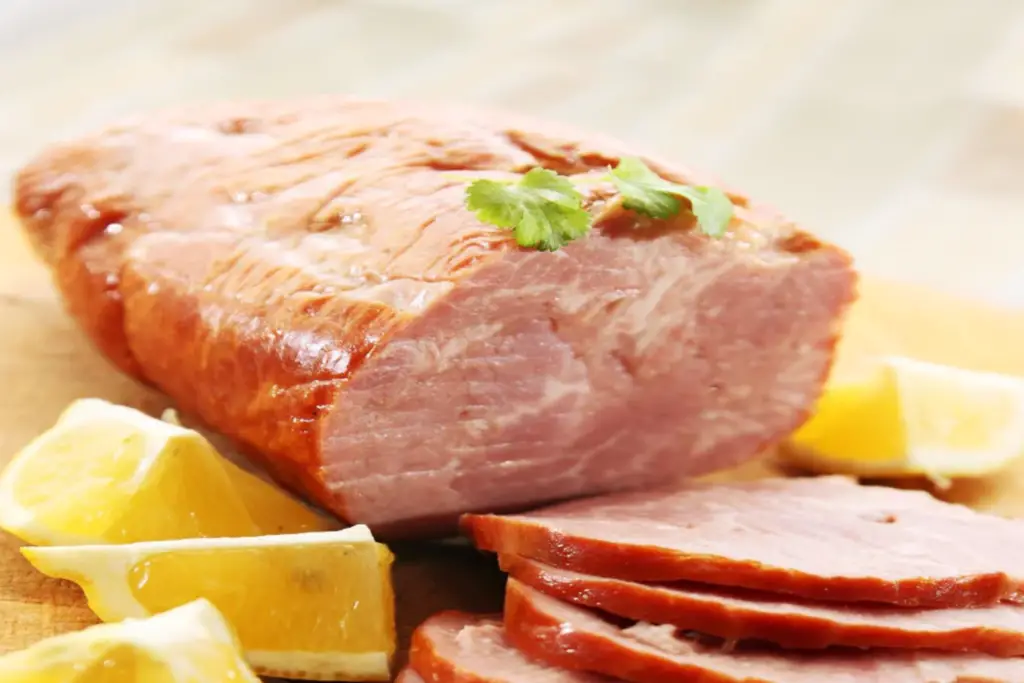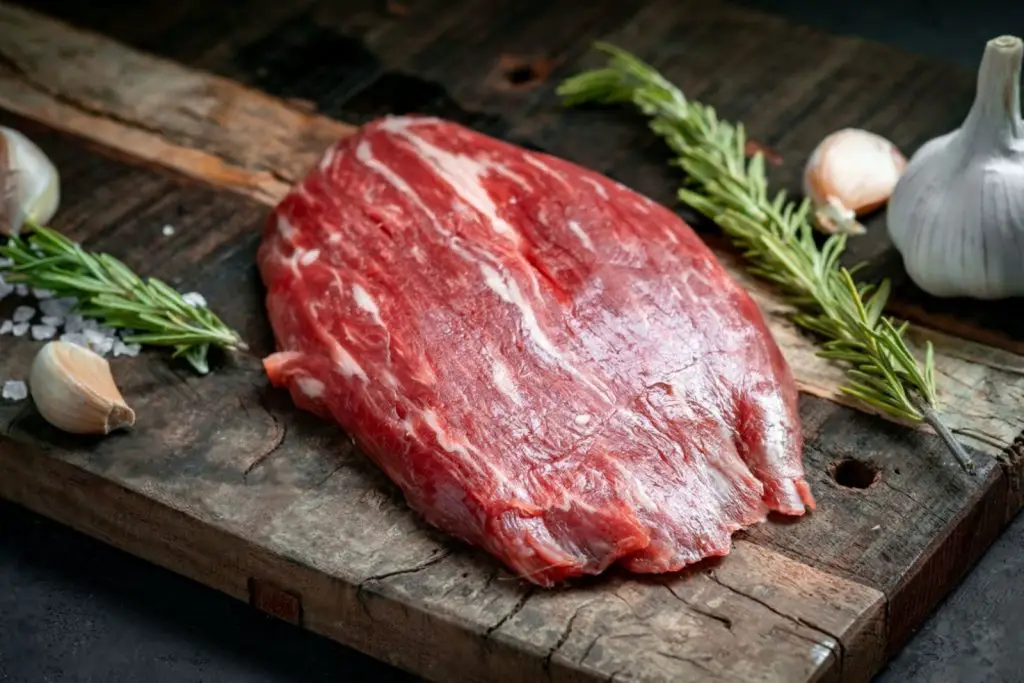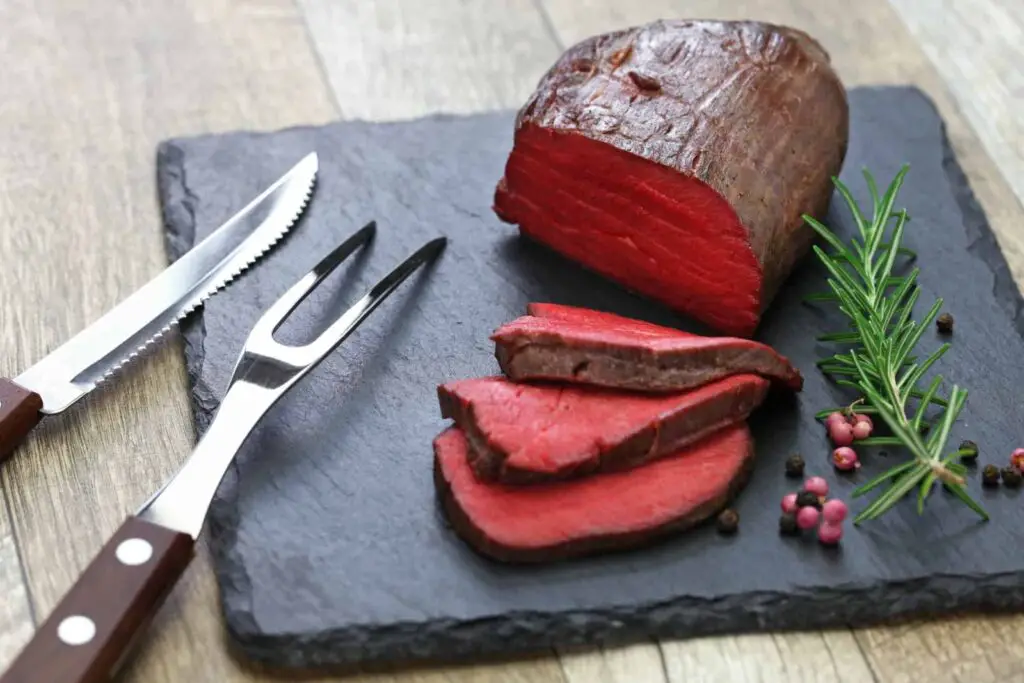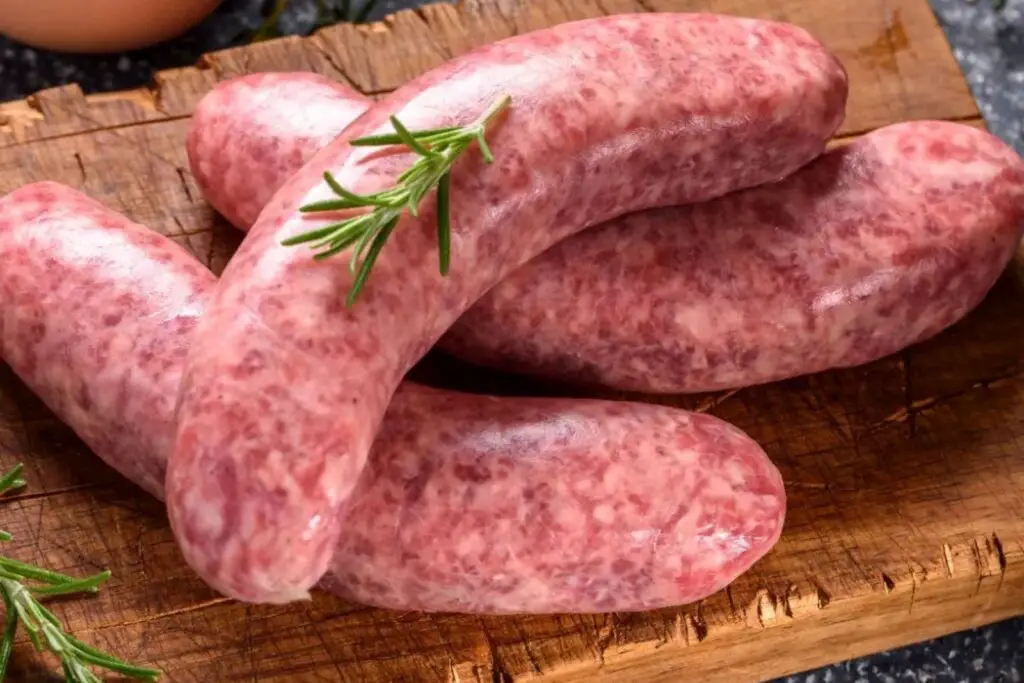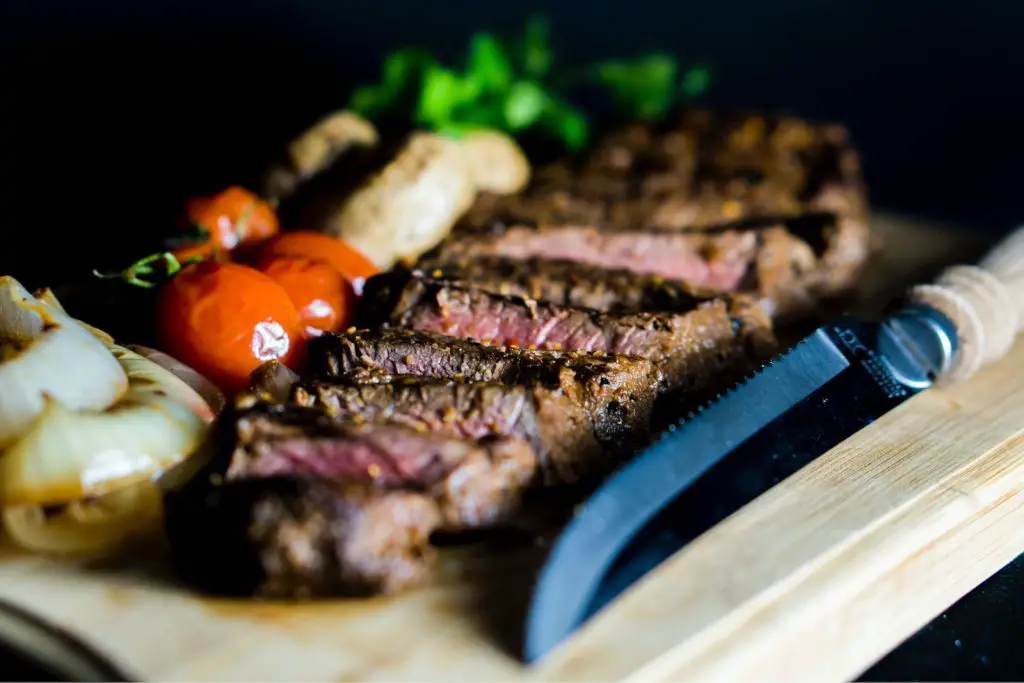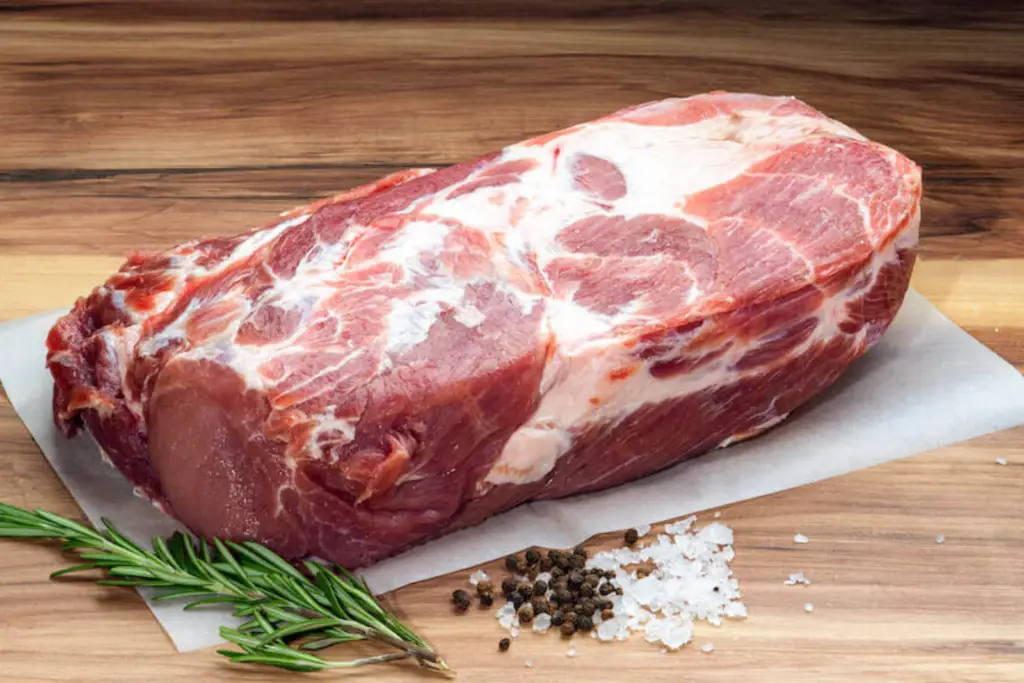Turkey, a delicious and versatile poultry, holds a special place in the hearts of many as a centerpiece for holiday feasts and a delectable protein option year-round. With its tender and succulent meat, turkey offers a delightful flavor that can be enhanced with a variety of seasonings and cooking methods. From roasted Thanksgiving turkeys to grilled turkey burgers and savory turkey soups, this versatile bird showcases its culinary prowess in a wide range of dishes. Packed with lean protein and essential nutrients, turkey is a wholesome addition to a balanced diet. However, when preparing turkey for special occasions or when purchasing in bulk, it may be challenging to consume it all before it starts to lose its freshness or spoil.
Freezing turkey becomes a practical and efficient method to preserve its delightful taste and tender texture, ensuring that each piece of meat retains its juiciness and nutritional value, ready to elevate your meals with the essence of perfectly frozen turkey, even when fresh poultry is not readily available or when you wish to enjoy this delightful protein at your convenience. In this guide, we will explore the best practices for freezing turkey, allowing you to savor the richness of this beloved bird and elevate your culinary repertoire with the essence of perfectly frozen turkey, without the need for a fresh purchase or frequent visits to the market.
Here are the simple steps to freeze turkey:
Step 1: Select the Right Turkey
Selecting the right turkey is a crucial step in the process of freezing turkey. The quality and freshness of the bird will directly impact the taste and safety of the meat when you decide to use it later. Here’s why this step is essential and what you should consider when choosing a turkey for freezing:
- Freshness and Quality: Freezing is an excellent preservation method, but it cannot improve the quality of the meat beyond what it was before freezing. Therefore, it’s essential to start with a fresh and high-quality turkey. Look for a turkey that has been properly stored at the correct temperature to maintain its freshness.
- Expiry Date and Storage Conditions: Check the turkey’s expiry date on the packaging. Ensure that the turkey is well within its use-by date before freezing it. Also, consider the conditions under which the turkey has been stored at the store or butcher shop. It’s best to buy the turkey from a reputable source with good food handling practices.
- Signs of Spoilage: Inspect the turkey carefully for any signs of spoilage. Signs of spoilage include a foul odor, slimy or sticky texture, and discoloration. If you notice any of these signs, do not freeze the turkey, as it may not be safe to eat.
- Whole Turkey or Specific Parts: Decide whether you want to freeze a whole turkey or specific parts like turkey breasts or drumsticks. Freezing individual parts can be more convenient if you plan to use them separately in various dishes.
- Size: Consider the size of the turkey in relation to your freezer’s capacity. Ensure that the turkey can fit comfortably in your freezer without being cramped or affecting the temperature of other items.
By selecting a fresh and high-quality turkey and ensuring it is free from signs of spoilage, you lay the foundation for a successful and safe freezing process. This step will help ensure that your frozen turkey maintains its taste and texture, providing you with delicious and satisfying meals when you choose to use it in the future.
Step 2: Clean and Prepare the Turkey
Cleaning and preparing the turkey before freezing is essential to ensure the meat’s safety and quality during storage. This step involves a series of actions to remove any potential contaminants and excess moisture from the turkey. Here’s why this step is important and what it entails:
- Removing Dirt and Debris: Washing the turkey under cold running water helps eliminate any surface dirt, debris, or contaminants that might be present. This step is crucial because dirt and debris can carry bacteria and other pathogens that may cause foodborne illnesses if not properly removed.
- Patting Dry: After washing the turkey, it’s essential to pat it dry with paper towels. Drying the turkey helps remove excess moisture, which can promote the growth of bacteria during freezing. Moisture can also lead to freezer burn, which can affect the texture and taste of the meat.
- Giblets and Excess Fat: If you’re freezing a whole turkey, it’s essential to remove the giblets (i.e., the neck, heart, liver, and gizzard) from the cavity. These organs are typically found inside the bird and are usually packaged separately when you buy a whole turkey. Freezing the turkey with the giblets inside can lead to uneven freezing and may affect the taste of the meat.
- Trimming Excess Fat: Additionally, trim any excess fat from the turkey. While fat is essential for flavor and moisture, excessive fat can lead to a greasier texture when thawed and cooked. Trimming excess fat before freezing allows you to control the fat content of your dishes when you eventually use the turkey.
- Cross-Contamination Prevention: Properly cleaning and handling the turkey also helps prevent cross-contamination in your kitchen. After handling raw turkey, make sure to wash your hands, utensils, and any surfaces that come into contact with the meat to avoid spreading bacteria to other foods.
By cleaning and preparing the turkey before freezing, you create a safe and healthy foundation for storing the meat. Removing dirt, debris, and excess moisture helps prevent bacterial growth, while taking out the giblets and trimming excess fat ensures an even and efficient freezing process. With a properly cleaned and prepared turkey, you can rest assured that your frozen meat will be of high quality and ready to use in a variety of delicious recipes when the time comes.
Step 3: Divide into Portions
Dividing a large turkey into smaller portions before freezing offers practical advantages and benefits, making the freezing process more convenient and efficient. This step involves separating the turkey into manageable sizes that can be easily thawed and used as needed. Here’s why dividing the turkey into portions is essential and what advantages it brings:
- Convenience in Thawing: Freezing a whole turkey can be challenging when you only need a portion of it for a particular recipe. By dividing the turkey into smaller portions, you can thaw only the amount you require, avoiding the need to defrost the entire bird, which can take a considerable amount of time.
- Even Freezing: Larger pieces of meat, like a whole turkey, can take a longer time to freeze completely. During this freezing process, ice crystals can form, affecting the meat’s texture and leading to potential freezer burn. By dividing the turkey into smaller portions, the freezing process becomes quicker and more even, preserving the quality of the meat.
- Versatility in Cooking: Having the turkey divided into portions allows for greater flexibility in meal planning and cooking. You can use individual turkey pieces for various dishes, such as turkey breasts for roasting, turkey legs for grilling, and turkey thighs for stews or soups.
- Portion Control: When the turkey is separated into portions, it becomes easier to control serving sizes, especially for smaller households or when you are cooking for fewer people. This can reduce food waste since you won’t have to thaw and cook more meat than you need.
- Reduced Waste: If you don’t plan to use the entire turkey at once, dividing it into portions allows you to freeze the leftover parts separately. This way, you can preserve unused portions for a more extended period, reducing the risk of spoilage and unnecessary waste.
- Faster Thawing: Smaller turkey portions thaw more quickly than a whole bird, reducing the overall waiting time before you can start cooking. This can be especially helpful if you need to prepare a meal in a hurry.
By dividing the large turkey into smaller portions before freezing, you enhance the overall convenience and usability of the meat. This step allows for easier thawing, even freezing, and more flexible meal preparation. Whether you need to cook a full turkey feast or a quick weeknight meal, having the turkey divided into portions ensures you can enjoy this delicious and nutritious poultry without any unnecessary hassle or waste.
Step 4: Wrap or Package Properly
Properly wrapping or packaging the turkey portions before freezing is essential to maintain the quality, taste, and safety of the meat during storage. This step involves selecting the right materials and techniques to protect the turkey from freezer burn and prevent contamination. Here’s why wrapping or packaging the turkey properly is crucial and what methods you can use:
- Prevent Freezer Burn: Freezer burn occurs when the surface of frozen food is exposed to air, causing moisture to evaporate and leaving the meat dehydrated. To prevent freezer burn, it’s essential to create a barrier that seals in the moisture and prevents air from reaching the turkey portions.
- High-Quality Freezer-Safe Materials: Use high-quality freezer-safe packaging materials to ensure the best results. Freezer-safe materials are designed to withstand low temperatures without becoming brittle or allowing air to penetrate. Common options include heavy-duty plastic wrap, aluminum foil, and freezer-safe resealable bags.
- Individual Wrapping: If you’re freezing turkey portions separately, it’s best to individually wrap each piece. For this, use plastic wrap or aluminum foil to create a tight seal around the turkey portion, leaving no exposed areas. Individual wrapping helps maintain the freshness and prevents the flavors of different turkey portions from mingling.
- Resealable Freezer Bags: Alternatively, you can use freezer-safe resealable bags to package the turkey portions. Before sealing the bag, remove as much air as possible from inside to minimize the risk of freezer burn. Press out the excess air or use a straw to suck it out before sealing the bag tightly.
- Sturdy Wrapping: Make sure the wrapping or packaging is sturdy and well-sealed to prevent any leaks or accidental openings in the freezer. A tight and secure package will keep the turkey portions safe from potential contamination and maintain their quality during freezing.
By wrapping or packaging the turkey portions properly, you ensure the meat remains in top condition during freezing. With the right materials and techniques, you can protect the turkey from freezer burn and maintain its texture and flavor until you’re ready to use it in your favorite dishes. Properly wrapped and labeled packages make it easy to organize your frozen turkey and enjoy its deliciousness for an extended period.
Step 5: Label and Date the Packages
Labeling and dating the packages of frozen turkey portions is a critical step in the freezing process that serves multiple important purposes. It involves clearly indicating the contents of each package and the date when the turkey was frozen. Here’s why this step is crucial and what benefits it provides:
- Easy Identification: When you have multiple packages of frozen turkey portions in your freezer, it can be challenging to identify them without proper labeling. Labeling each package with the contents, such as “turkey breasts” or “turkey drumsticks,” allows you to quickly find the specific portion you need without having to unwrap or defrost multiple packages.
- Avoiding Food Waste: By dating the packages, you ensure that you use the oldest turkey portions first. Frozen food can maintain its quality for an extended period, but it’s always best to consume it within a reasonable time frame. The date on the packages helps you keep track of the freezing order, so you can use the turkey portions in a first-in, first-out manner, reducing the risk of food waste.
- Safe Consumption: The freezing date on the packages enables you to gauge how long the turkey has been in the freezer. While frozen food is generally safe to eat indefinitely, it’s best to consume it within recommended time frames for optimal taste and quality. The date allows you to know how long the turkey has been frozen and make informed decisions about its use.
- Meal Planning: Properly labeled packages with clear contents and dates can aid in meal planning. You can plan your meals based on the available frozen turkey portions, making it easier to incorporate them into your cooking and reducing the need for last-minute grocery trips.
- Organization: Clear labeling fosters an organized freezer, making it more efficient and convenient to find the turkey portions and other frozen items you need. This prevents unnecessary digging and rearranging, saving time and effort.
- Food Safety: Knowing the contents and freezing date of each package helps you avoid confusion and potential cross-contamination when handling frozen turkey. It ensures that you use the meat appropriately and safely for your culinary creations.
By labeling and dating the packages of frozen turkey portions, you establish an efficient and organized system for storing and using your frozen meat. This step helps you avoid food waste, maintain food safety, and enjoy the delicious taste of the turkey in various recipes while ensuring its optimal quality throughout its freezer life.
Step 6: Freezer Placement
The proper placement of the wrapped turkey portions in the freezer is a crucial step to ensure efficient and effective freezing. Placing the portions in a single layer on a baking sheet or tray offers several benefits that contribute to maintaining the quality of the frozen meat. Here’s why this step is important and what advantages it brings:
- Prevents Sticking Together: Placing the turkey portions in a single layer on a baking sheet or tray prevents them from sticking together during freezing. If the portions are stacked or placed too close to each other, they may freeze in a clumped or fused state, making it challenging to separate them when you need to use a specific portion.
- Allows for Even Freezing: When the turkey portions are spread out in a single layer, they freeze more quickly and evenly. Even freezing helps preserve the texture and flavor of the meat, as rapid freezing reduces the formation of large ice crystals, which can affect the meat’s cellular structure.
- Faster Freezing Time: Placing the turkey portions in a single layer allows the cold air of the freezer to circulate around each piece, promoting faster freezing. Quick freezing helps lock in the natural juices and flavors of the turkey, ensuring better quality when you thaw and cook it later.
- Prevents Cross-Contamination: When the turkey portions are separated and arranged in a single layer, there is less chance of cross-contamination between different pieces. This is especially important if you are freezing raw and cooked turkey portions in the same freezer. Proper spacing reduces the risk of any potential bacteria transfer between the meat.
- Easy Storage and Retrieval: By placing the wrapped turkey portions in a single layer, you create an organized and accessible freezer space. It becomes easier to store the portions efficiently and find the specific piece you need without having to disturb other packages.
- Minimizes Freezer Space Usage: Spreading the turkey portions in a single layer maximizes the use of freezer space. You can fit more portions in the same area, making efficient use of the available storage capacity.
By placing the wrapped turkey portions in a single layer on a baking sheet or tray, you optimize the freezing process and maintain the quality of the meat. This step ensures even freezing, easy storage, and quick retrieval when you’re ready to use the frozen turkey. With properly arranged turkey portions, you can look forward to delicious and perfectly preserved meat for your future culinary creations.
Step 7: Flash-Freeze the Turkey
Flash-freezing is a rapid freezing process that involves exposing the turkey portions to very low temperatures quickly. This step is essential for preserving the quality and texture of the meat during freezing. Here’s why flash-freezing is crucial and how it helps maintain the optimal quality of the frozen turkey:
- Rapid Freezing: Flash-freezing involves placing the turkey portions in the freezer on a baking sheet or tray and exposing them to the freezer’s coldest temperatures. By freezing the turkey portions rapidly, the formation of large ice crystals is minimized. Large ice crystals can damage the meat’s cellular structure, causing it to become mushy when thawed and cooked.
- Retains Texture and Flavor: Rapid freezing helps maintain the turkey’s natural texture and flavor. The quick freezing process preserves the moisture and natural juices within the meat, ensuring it remains tender and juicy when you eventually cook it.
- Reduces Risk of Freezer Burn: Flash-freezing reduces the risk of freezer burn, a condition where the surface of frozen food becomes dehydrated due to exposure to air. With less time for air to interact with the turkey portions during the rapid freezing process, the risk of freezer burn is significantly minimized.
- Preserves Nutrients: Quick freezing helps preserve the nutritional content of the turkey. It helps retain essential vitamins, minerals, and other nutrients present in the meat, ensuring that your frozen turkey remains a nutritious option for future meals.
- Efficient Use of Freezer Space: Flash-freezing allows you to efficiently use freezer space. By spreading the turkey portions in a single layer on a baking sheet or tray, they freeze more rapidly and uniformly, allowing you to stack them efficiently after they are frozen solid.
- Saves Time: Flash-freezing is a time-saving technique. Unlike slower freezing methods, which may take several hours or even days, flash-freezing only requires 1 to 2 hours to solidify the turkey portions adequately.
By flash-freezing the turkey portions, you ensure that the meat retains its texture, taste, and nutritional value. The quick freezing process minimizes damage to the meat’s cellular structure and prevents the development of freezer burn. This step helps you maintain the quality of the frozen turkey, so you can enjoy delicious and nutritious meals whenever you decide to use it.
Step 8: Final Freezer Storage
Properly storing the individually frozen turkey portions in the freezer is the final step in the freezing process. This step involves arranging the portions in a designated section of the freezer to maximize space and ensure easy access when you need to use them. Here’s why final freezer storage is important and how to make the most of your freezer space:
- Prevents Contamination: By storing the individually frozen turkey portions in a designated section, you reduce the risk of cross-contamination with other frozen items. This is particularly important if you have raw and cooked turkey portions or other foods in the same freezer. Separating and organizing the turkey portions prevent the spread of bacteria and potential flavor transfer.
- Efficient Use of Space: Neatly arranging the turkey portions in the freezer allows you to make the most of the available space. Proper organization ensures that you can fit more portions in the freezer and minimize wastage of valuable space.
- Easier Retrieval: When you organize the freezer space, it becomes easier to find the specific turkey portion you need when cooking. You can quickly access the portion you want without having to rummage through other packages or disturb the organization.
- Maintain Quality: Proper storage ensures that the turkey portions remain frozen solid and retain their quality over time. A well-organized freezer helps maintain a consistent temperature, preventing thawing and refreezing, which can affect the texture and taste of the meat.
- Label Visibility: Organizing the turkey portions in the freezer allows you to keep the labels and dates visible and legible. This ensures that you can easily identify the contents and expiration dates, helping you use the oldest portions first and reducing the risk of food waste.
- Rotation System: By storing the turkey portions in an orderly manner, you can implement a rotation system, using the oldest portions before the newer ones. This practice helps ensure that no portion remains in the freezer for an extended period, keeping your stock of frozen turkey fresh and safe for consumption.
By finalizing the freezer storage of the individually frozen turkey portions, you create an organized and efficient system that preserves the quality of the meat. Proper storage prevents cross-contamination, maximizes freezer space, and allows for easy access when you need to use the turkey in various recipes. An organized freezer ensures that your frozen turkey remains a versatile and delicious ingredient for your future culinary endeavors.
Step 9: Thaw the Frozen Turkey
Thawing frozen turkey properly is a critical step in the process of using the meat for cooking. Thawing allows the turkey to return to a safe temperature, ensuring even cooking and maintaining the meat’s quality. Here’s why this step is important and how to thaw and use frozen turkey safely:
- Safe Thawing: Thawing frozen turkey at room temperature or in warm water is not recommended, as it can lead to bacterial growth. The safest method is to thaw the turkey in the refrigerator. This slow thawing process keeps the meat at a consistent, safe temperature, preventing the growth of harmful bacteria.
- Gradual Thawing: By transferring the desired portion of frozen turkey from the freezer to the refrigerator, you allow it to thaw gradually. Slow thawing in the refrigerator helps preserve the turkey’s texture and flavor, preventing any loss of moisture or tenderness.
- Plan Ahead: Thawing turkey in the refrigerator takes time, so it’s essential to plan ahead. Depending on the size of the turkey portion, it may take several hours to a day or more for it to thaw completely. If you’re planning to cook the turkey for a specific meal, take into account the necessary thawing time in your meal planning.
- Avoid Room Temperature Thawing: Thawing frozen turkey at room temperature is not recommended, as it can create an environment conducive to bacterial growth. Similarly, using warm water for quick thawing is unsafe, as it can lead to uneven thawing and risk the growth of harmful bacteria on the surface of the meat.
- Safe Handling: During thawing, ensure that the turkey is kept in a leak-proof container to prevent any potential cross-contamination with other foods in the refrigerator. Keep it on the bottom shelf to prevent any drips from contaminating other foods.
By following the proper thawing method, you ensure the safety and quality of the frozen turkey before cooking. Gradual thawing in the refrigerator is the best approach to preserve the meat’s texture and flavor, while proper cooking guarantees a safe and delicious dining experience. Thawed turkey can be used in a wide range of recipes, allowing you to enjoy this flavorful poultry in various culinary delights.
Other related questions
How long can turkey last in the freezer?
Turkey can last in the freezer for up to 6-12 months if properly stored at 0°F (-18°C) or below. For best quality, whole turkeys may be stored for up to 12 months, while turkey parts can be kept for around 6 months. Be sure to label and date the packages to ensure you use the oldest portions first.
Can you refreeze turkey?
Refreezing turkey is generally safe if it was thawed in the refrigerator and remains at a safe temperature (below 40°F or 4°C). However, the quality of the meat may be affected after the second freeze, with potential texture and taste changes. It is best to cook the thawed turkey before refreezing to preserve its quality and ensure safe consumption.
How do I know if the turkey has gone bad after being frozen?
To determine if frozen turkey has gone bad, look for signs of spoilage such as a foul or rancid odor, unusual discoloration, or slimy texture. If the turkey appears discolored or has ice crystals on its surface, it may have suffered from freezer burn. If you have any doubts about the safety or quality of the turkey, it’s best to discard it to avoid the risk of foodborne illness.
Can you freeze turkey with gravy or sauce, and how does it affect the freezing process?
Yes, you can freeze turkey with gravy or sauce. The presence of gravy or sauce does not significantly affect the freezing process. However, it’s essential to cool the turkey and gravy/sauce before freezing to prevent the growth of harmful bacteria. Package the turkey with the gravy/sauce in airtight containers or freezer bags, ensuring proper sealing to prevent freezer burn and maintain the quality of both the turkey and the sauce.
Are there any special considerations when freezing smoked or roasted turkey?
When freezing smoked or roasted turkey, there are several special considerations to ensure the best results. Allow the turkey to cool completely before freezing to prevent bacterial growth. For better preservation, slice or carve the turkey into smaller portions for easier thawing and reheating. Additionally, remove any stuffing or gravy before freezing and package the turkey in airtight containers or freezer bags to prevent freezer burn and maintain its flavor and texture.
Can you freeze turkey that has been marinated or brined?
Yes, you can freeze turkey that has been marinated or brined. However, consider that freezing may slightly alter the texture and flavor of the marinated or brined turkey. To maintain the best quality, freeze the turkey in airtight containers or freezer bags, ensuring it is fully coated with the marinade or brine, and label them with the freezing date for easy identification. After thawing, cook the turkey thoroughly to ensure it reaches a safe internal temperature and to enjoy the full flavor of the marinade or brine.
How to freeze turkey leftovers with different flavors or seasonings?
To freeze turkey leftovers with different flavors or seasonings, first, separate the turkey into individual portions based on the different flavors or seasonings. Next, package each portion in separate airtight containers or freezer bags, making sure to remove excess air to prevent freezer burn. Label each container with the type of flavor or seasoning and the freezing date for easy identification, and store them in the freezer for later use in various dishes.
Can you freeze turkey that has been cooked with stuffing inside?
Freezing turkey that has been cooked with stuffing inside is not recommended. When stuffing is cooked inside the turkey, it becomes an ideal environment for bacteria to grow, and freezing may not effectively kill these bacteria. To prevent potential foodborne illnesses, it is advised to remove the stuffing from the turkey before freezing and store it separately in airtight containers or freezer bags. The cooked turkey can be frozen separately and used in various dishes, while the stuffing can be reheated separately when needed.

